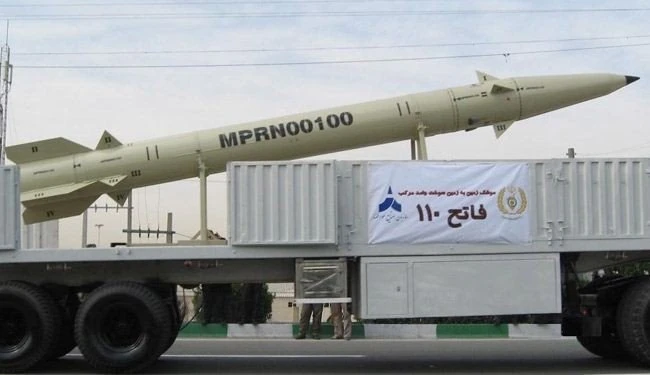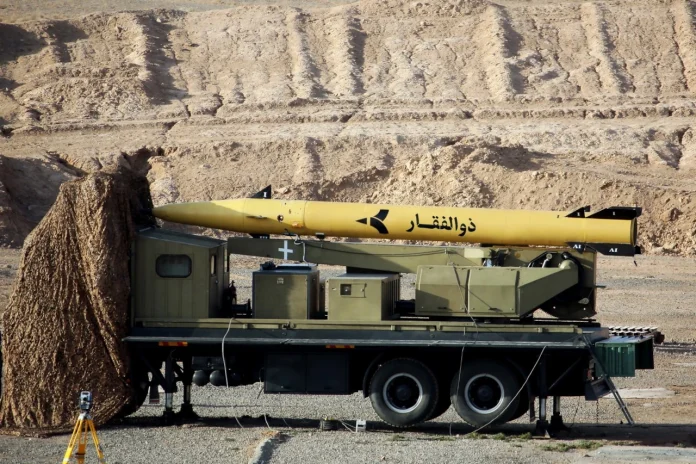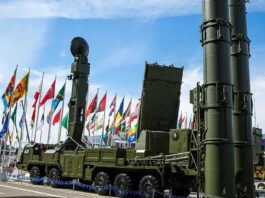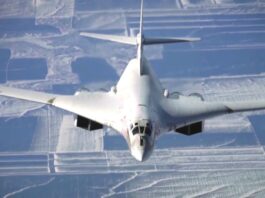The first batch of Fateh-110 and Zolfaghar short-range missiles capable of reaching targets at a range of 300 and 700 kilometres, respectively, are already being built for Russia in Iran, says The Washington Post.
The Washington Post reported on Sunday, October 16, citing American sources, that as early as September 18, Tehran dispatched representatives to Moscow to negotiate arrangements for the transfer of more weaponry, including two kinds of Iranian surface-to-surface missiles. According to US intelligence, the Iranian armaments industry is already producing the first batch of Fateh-110 and Zolfaghar short-range ballistic missiles capable of striking targets 300 and 700 kilometres away, respectively. If this happens, Russia will get these missiles for the first time since the start of the conflict. According to Reuters, the agreement was reached during the visit of Iranian First Vice President Mohammad Mokhber to Moscow on October 6.
Iran is also planning further supplies of unmanned aircraft to Russia, including dozens of extra Mohajer-6s and Shahed-136s. These so-called kamikaze drones can deliver explosives up to 2,500 kilometres afar and are designed to destroy ground targets. In recent weeks, Iranian technical advisors have been to Russian-held territory to instruct on drone operations.
When the Russians mocked the Iranians
Following the Iran-Iraq conflict, Iran pursued point-guided solid-fuel missiles. Initially, Iran attempted to acquire Chinese equivalents but could not obtain a superior missile than the surface-to-surface version of the Chinese SAM-2 missiles. Therefore the domestic project was initiated a few years later. Iran’s government attempted to acquire the export version of the Russian Iskander missile, but Russia, seeking stronger relations with the United States, refused to sell. Hassan Tehrani Moghaddam, an Iranian military officer in the Aerospace Force of the Islamic Revolutionary Guard Corps and architect of Iran’s ballistic missile project, who was present during the discussions, reportedly said to the Russian side, “if you do not sell, we will build.” The Russians responded with a laugh. The export version of the Iskander missile has a range of fewer than 300 kilometres, a 500-kilogram warhead, and satellite and inertial guidance.
Iran sought to build the missile using existing facilities. China had sold Iran the HQ2-derived surface-to-surface M-7 (CSS-8) SRBMs and the Silkworm anti-ship missile (Soviet P-15). Iran started manufacturing the M7 SRBM under the designation Tondar 69. However, this missile used poisonous and corrosive AK-20K/TG02 propellant liquid fuel, had a solid fuel booster, and had a low range. Iran chose to turn their largest solid fuel rocket, Zelzal 3 (a solid propellant unguided artillery rocket with a range of 200 kilometres), into a guided missile. To do this, the Thunder 69 missile guidance system, which was of the inertial type and active radar in the anti-ship variant, was adapted to the Zelzal 3, including the design and installation of gyroscopes, beams, sensors, etc. It was Iran’s first guided solid-fuel tactical missile, and its aiming was superior to any of its prior missiles. The name of the new missile was Fateh 110.
Fateh-110 and Zolfaghar short-range ballistic missiles
The Fateh-110 missile is a short-range missile whose initial iteration was presented in the early 1980s. The estimated range of the first iteration of this missile was 200 kilometres. The fourth generation Fatih 110 ballistic missile was introduced in 1991, increasing the missile’s range to more than 300 kilometres and making it all weather. The upgraded ballistic missile can target and destroy land and sea targets, enemy concentrations, command centres, missile sites, ammo dumps, radars, and other specific targets. It can be launched from both mobile and stationary launchers.

The Fateh-110 missile series is the backbone of Iran’s ballistic missile arsenal. The series includes Hormuz 1 and 2, Fateh 313, Zulfiqar, Fateh Mobeen, Dezful, Raad 500, Haj Qasim and the 1450 km Khybershakan missiles. The Persian Gulf missile is a variant of the Fatih 110 family that can strike maritime targets with a terminal phase optical warhead.
Zulfiqar ballistic missile is also an upgraded version of the 4th generation Fateh 110 missile, which has increased length, diameter, range, and warhead weight. The weight of the warhead of this missile is 450 kg, and its effective range is 700 KM. It was unveiled on September 31 2016, at the annual armed forces parade in Bandar Abbas, and its mass production line was unveiled on October 4 of the same year. The control blocks have been moved to the rear of the guidance, control, and navigation block. The Circular Error Probability (CEP) of the missile is about 10 meters, and it can travel at 1.5 km per hour.
Both Fateh-110 and Zulfiqar missiles have been used in Syria. Recently Fateh-110 Missile was used against alleged secret Mossad bases in Iraq’s Erbil city.
Denials by officials
Officials from the United States, Russia, and Iran have refused to comment on claims of Iranian weaponry transfers to Russia. Even though several Iranian drones have wreaked havoc in Ukraine, authorities of the Islamic Republic vehemently deny the provision of weaponry to Russia. In a call with his Finnish colleague on October 7, Iranian Foreign Minister Hossein Amirabdollahyan reiterated that Iran stays impartial about Russia and Ukraine because it favours a peaceful settlement to the issue. “Although some countries have provided military support to Ukraine, we have never sent, and we will not send any weapons to Russia to use in the war against Ukraine because we believe that this crisis should be resolved politically, and the provision of any armed support to both sides postpones the chance for peace,” the head of the foreign policy department said.
Russia has vehemently rejected Western media reports on the transfer of Iranian weapons. Dmitry Peskov, the Press Secretary of the President of Russia, called it “information stuffing.”
Pentagon spokesman Patrick Ryder said that the US authorities have no evidence that Iran is supplying Russia with ground-based missiles to destroy ground targets.







Salaam
“The Circular Error Probability (CEP) of the missile is about 10 meters, and it can travel at 1.5 km per hour.”
Are you sure that it is 1.5 km per “hour”? I think it must be very faster.